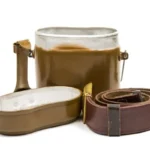Have no idea about how to add water to in floor heating system? Here we are to help you. Homeowners are becoming more and more interested in in-floor heating. They’re a comfortable, energy-efficient way to heat your house. If you’re a new homeowner, your in-floor heating system might need water added.
Here’s what you need to know. You’ll have no problem maintaining your in-floor heating system because we’ll walk you through it step-by-step.
To add water to an in-floor heating system, locate the system’s fill valve, connect a hose, and slowly introduce water until the pressure gauge reads the recommended level. Bleed air from the system to ensure optimal performance. Consult a professional if unsure.
How To Add Water To In Floor Heating System | Pro Guide
Let’s start by understanding what in-floor heating is. Warm water is circulated through tubes underneath your flooring to heat your home. As a result, the whole house stays warm and comfortable because the heat is distributed evenly.
Here’s what you must do to add water to your in-floor heating system.
Step 1. Turn off the heating system
First, Turn off the gas or electricity before adding water to the heating system. Turn off the water supply valve and let the system cool down.
Step 2. Locate the manifold
A manifold connects the tubing that carries hot water to your flooring. You’ll usually find a central control near the boiler.
Step 3. Close off the circuit
Close off the part of the circuit where you need to add water before you add water. By doing this, you can only fill the areas that need it.
Step 4. Add water
Once you’ve figured out which part of the circuit needs filling, open the valve bringing fresh water into the system. Ensure you check the water pressure level as you let the water flow into the system. You don’t want to overfill the system because air might get trapped, which can cause your system to break down.
Step 5. Restart the heating system
When you’ve filled the system with water, turn it back on to restart the heating system. Ensure the pressure in the system meets the manufacturer’s recommendations with the pressure gauge.
Also Read: How Much Does A Radiant Floor Heating System Cost?
What Kind Of Liquid Is Used In In Floor Heating?

Liquids can be used for in-floor heating in several different ways. If you’re considering installing in-floor heating and want to know more about the other options, you might wonder what liquid is used.
In many applications, including medical devices and antifreeze for cars, glycol is one of the most popular liquids. Since it doesn’t evaporate like water at room temperature, glycol can also be used as a coolant in refrigerators and air conditioners.
Propylene glycol methyl ether (PGME) is another liquid used for floor heating, which has similar properties to glycol but better cooling. In addition, propylene glycol methyl ether has an anti-insoluble feature that makes it easier for homeowners to clean up spills during installation or maintenance!
This type of system can also handle a lot of other liquids—this list is by no means exhaustive! Don’t forget that all beverages must meet flammability standards before they’re approved.
Also Read: How Long Do Radiant Floor Heating Systems Last?
How Much Water Do You Put In An Underfloor Heating System?
To determine how much water to put in your underfloor heating system, consider its size and type. Most of the time, the size of the system will determine how much water to use. A mixing valve needs water to flow at a rate of 6-12 liters per minute.
There’s a difference in water volume depending on the size of the underfloor heating system. Generally, underfloor heating is split into zones, so how much water you need depends on how many zones you have.
Underfloor systems come in different types, so you must consider that when deciding how much water to put in. For instance, open systems can lose water due to evaporation, so they need more water.
An available system directly connects the boiler and the underfloor heating system. For these types of systems, you’ll have to top them up regularly.
The water expansion vessel will regulate water loss in a closed system, so less water is needed. An intermediary component, like a heat exchanger, exists between the boiler and the underfloor heating system in a closed system. Water in closed systems doesn’t get contaminated, and they’re usually safer since they don’t leak or get infected by air.
If you’re adding water to your underfloor heating system, ensure you add enough to fill the whole system adequately, but only add a little. Looking at the pressure gauge will tell you if there’s enough water in the system.
You’ll see what pressure range the water must be in on the pressure gauge. If the pressure is out of that range, there’s a problem with the system that needs to be fixed.
It’s also important to consider the quality of the water. Your system and pipes can get clogged if you use dirty water since contaminants can cause damage.
If possible, use softened water since it won’t clog your pipes or damage your system. Testing your water or consulting with a professional will help mitigate the risk of damage if you need clarification on the quality.
Also Read: How Does A Radiant Floor Heating System Work?
Bottom Line:
Now you know how to add water to in Floor heating system. Adding water to an in-floor heating system is easier than you think.
However, you must follow the proper steps and safety procedures to avoid mishaps. Feel free to reach out to a professional if you need clarification. Using this guide, you can keep your home cozy all year long.



